A FEW WORDS ABOUT THE SUMMER IN THE WOODS - for the Thursday is Butterfly Day and Insect Day Giveaway- Week 52
There is a lot to see during the summer in the Mediterranean woods, here in the area where I live. The Istra peninsula, northern Adriatic, in Croatia.
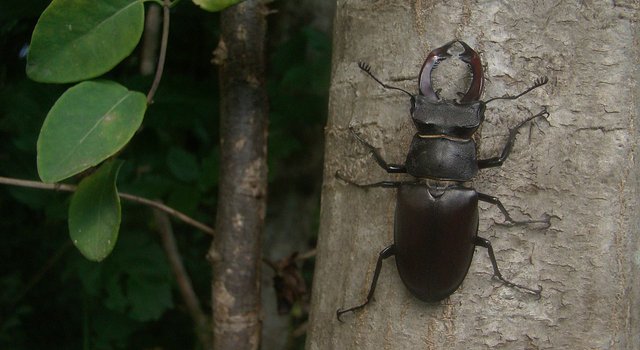
This post is planned to be a little introduction, a teaser of sort, to the colorful biodiversity of this habitat. And I'll start with this well known, iconic insect - the Stag beetle ( Lucanus cervus), one of the largest insects of this area, and definitely one with the most distinctive mandibles, although that applies only to the males. In the larval phase they feed on rotting wood, while in their short life as adults (only a few weeks) they consume nectar and tree sap. Larvae need 4 to 6 years, and a few stages, to become pupae and soon after adult beetles that we can see flying at dusk around the forest.
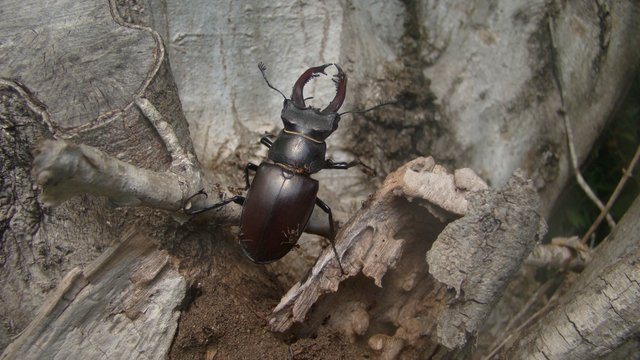 (Enlargeable)
(Enlargeable)On this enlargeable photograph you can see (especially if you enlarge it) a bunch of ants crawling on the beetle, doesn't seem that it's being attacked by ants. Maybe is some sort of cleaning ... or maybe is an attack but isn't particularly effective to look like one. I don't know enough to clarify the situation, nor I found anything about the relations between ants and these beetles in my little internet search.
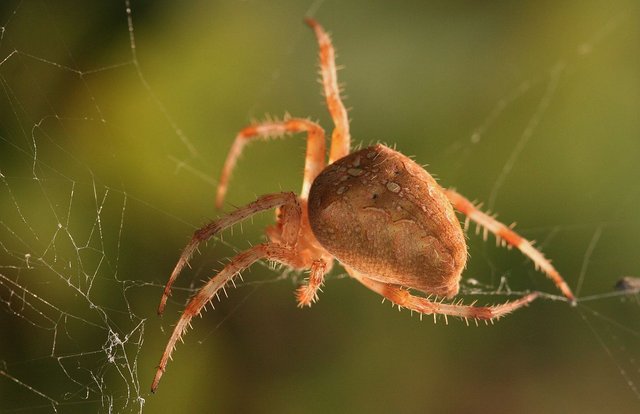
Hanging on his web, situated between the lower branches of an Evergreen oak (Quercus ilex), here on this and the following picture ...
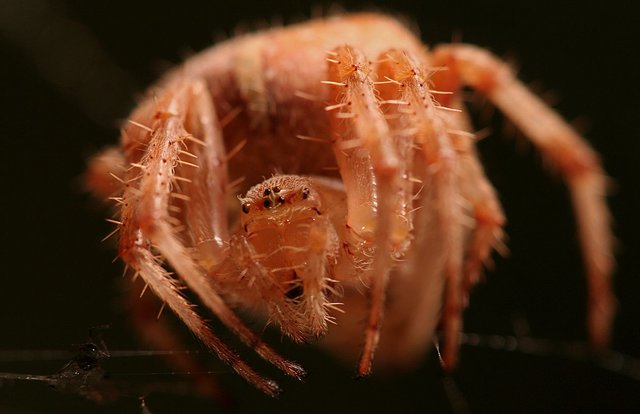
... you can see one of the many Pumpkin spider species, very common in these shady Woodland areas.
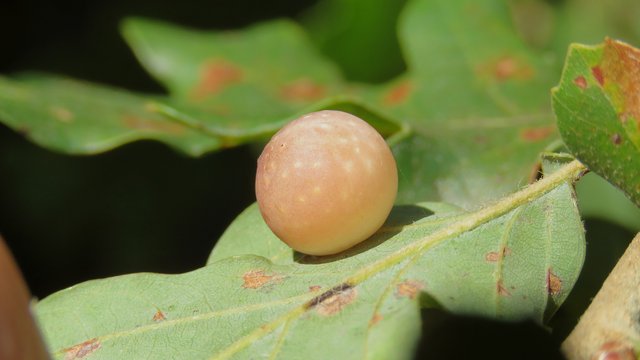 (Enlargeable)
(Enlargeable)Formations like this are a common decoration on many types of leaves in the forest. And they also come in many sizes and shapes. This one is freshly produced and looks pretty juicy ... which is unusual, more often I come across the ones that look dry and hard like wood. They are made by Gall wasp. There are quite a few species active in these forests and I don't know which one is responsible for this particular gall formation. The plant galls mostly develop directly after the insect lays the eggs. I found out through Internet that the female deposits an egg into the tissue of the host plant. When the egg hatches and the larva begins to feed, it triggers a reaction in the host plant, causing the formation of the gall.
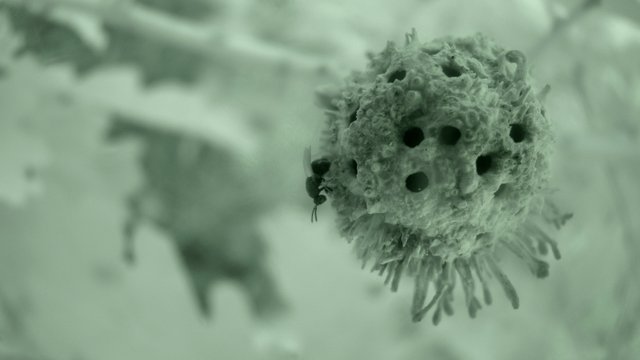 (Enlargeable)
(Enlargeable)Here is the only photograph of one of these wasps I ever made. I did it in the deep shade, in pretty low light conditions, using a night vision program of my small compact camera. That's way the shot has this greenish tone. The picture is enlargeable so you can take a good look at this minuscule wasp and her world. It's standing on a different kind of gall, and maybe has just exited the nest ... but I'm not sure. It was a great encounter for me, it was very cool to finally see this insect in nature, resting on one of those mysterious - looking, and quite beautiful formations.
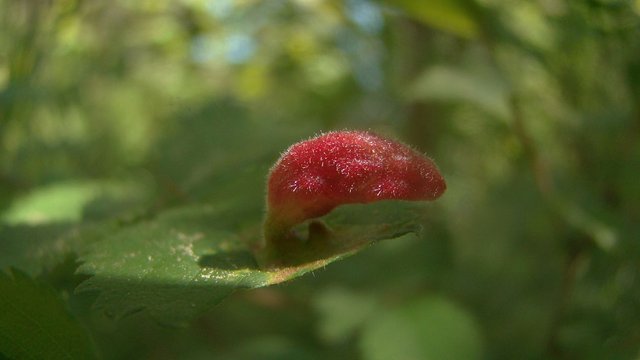
Here is a very different, soft and colorful formation ... and I don't know which insect species holds the copyrights for this artwork.
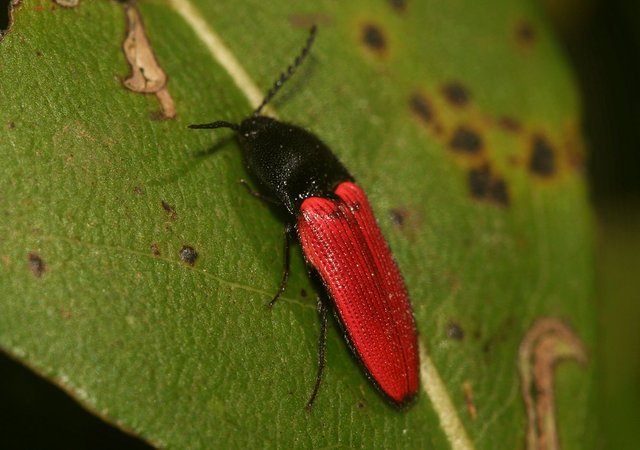
Here is another colorful detail from these woods. The Ampedus sanguineus. One of the most colorful species of Click beetles.
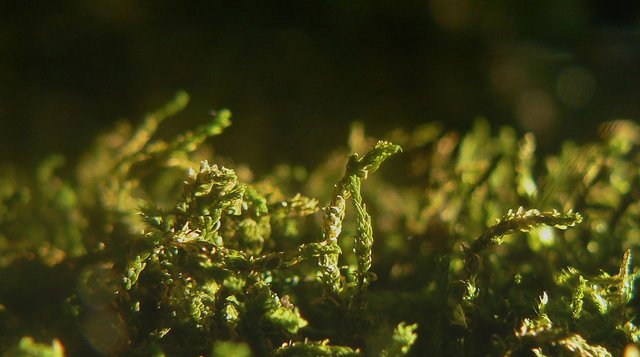
While searching for interesting details deep in the forest's shade...
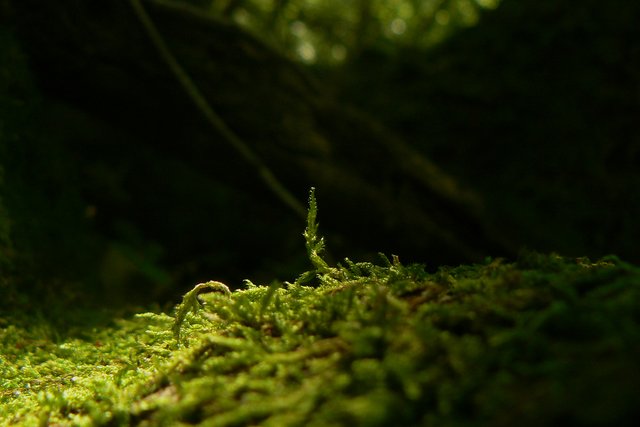 (Enlargeable)
(Enlargeable)... I always try to catch them in one of the short and beautiful spotlights that occasionally come through the dense foliage.
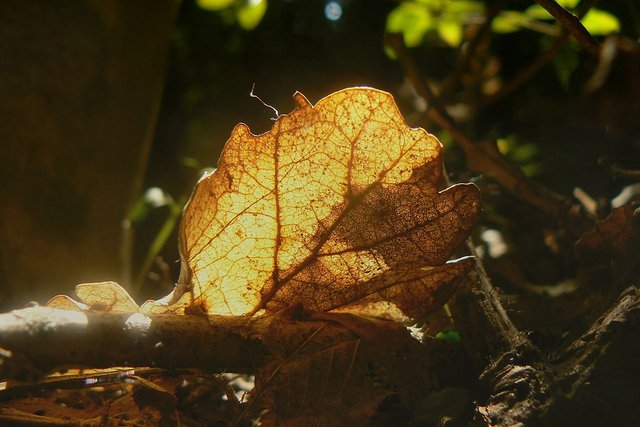
Here is a fallen leaf ...
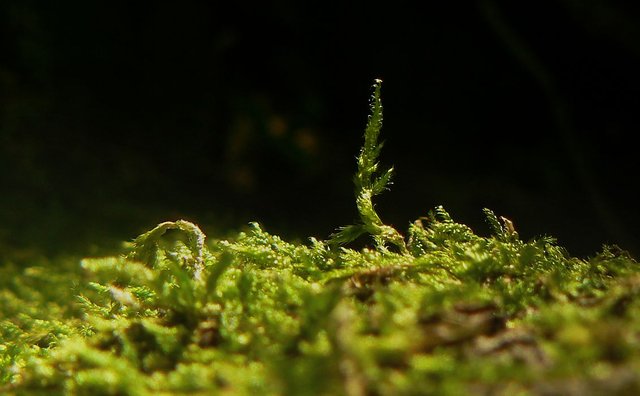
... on this picture a more close up look at the moss ...
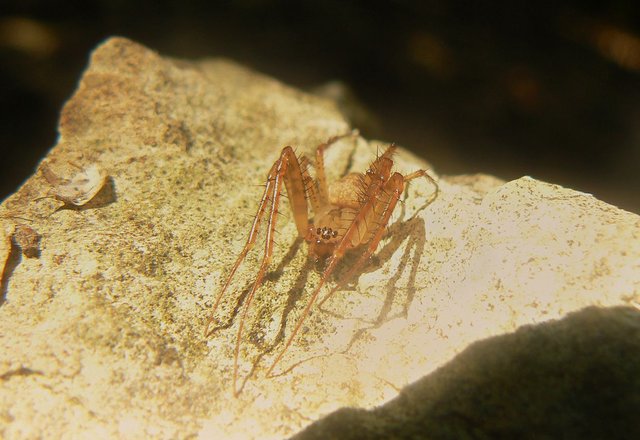
... here I caught a long - legged spider that is usually hiding among the fallen leaves ... and on the following photograph ...
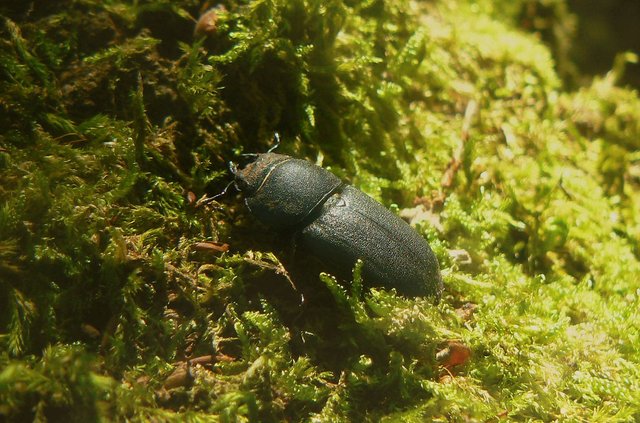
... you can see a much smaller Stag beetle relative, the Dorcus parallelipipedus beetle. Both sexes in this species look very much like smaller versions of the Lucanus cervus female.
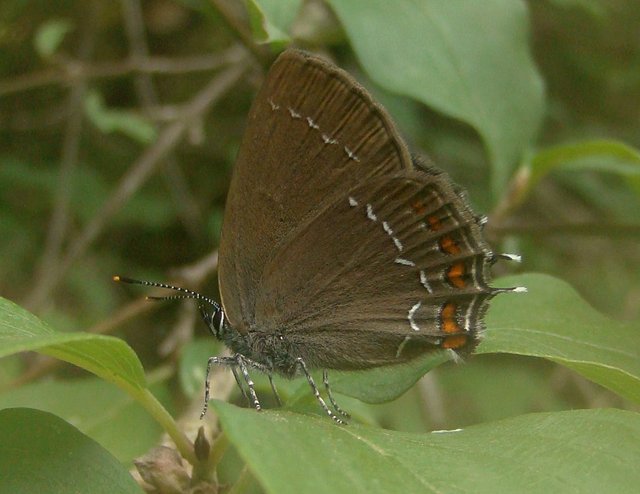
And now, after all these beetles and stuff ... is time for a bit of more conventional beauty :) - some butterflies. This small species is the Satyrium acaciae ... well, at least I think so ... I'm never sure with these small butterflies. They can be found at the borders of the forested areas and on the small paths through the woods.
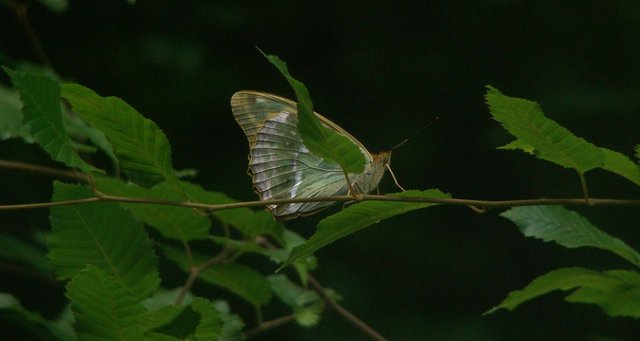
The much larger ... and very beautiful ... Silver-washed fritillary butterflies (Argynnis paphia) ... can be regularly found deep in the forest ...resting on trees ... but you can also see them feeding on the meadows.
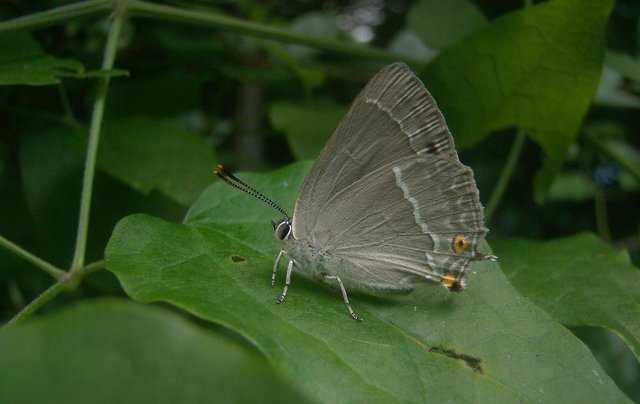
This little gray beauty is the Purple hairstreak butterfly (Neozephyrus quercus). Very typical for the forested areas with many oak and elm trees. The surfaces of the wings that you can't see on the photograph are shiny blue.
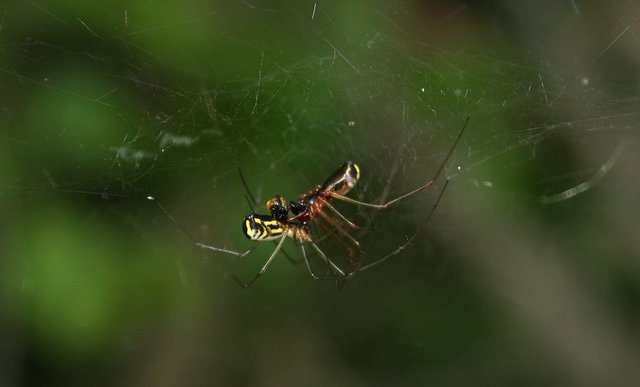
On this photograph you can see the mating of one of the spider species very common in this habitat ... unfortunately I couldn't find which exactly species is this.
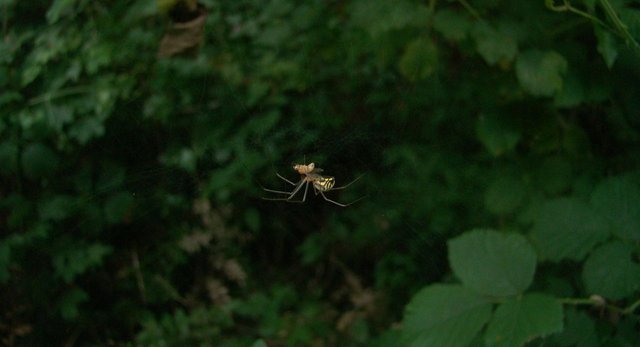
And here ...
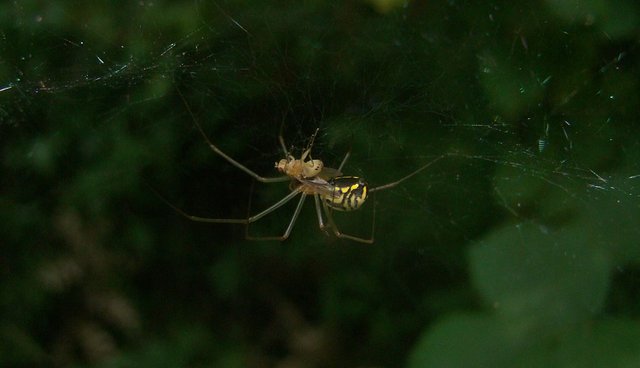
... you can see the same kind of spider ...
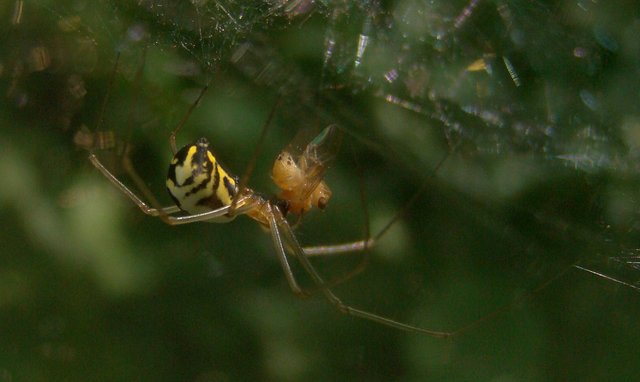
... with his prey ... a minuscule, amber colored fly.
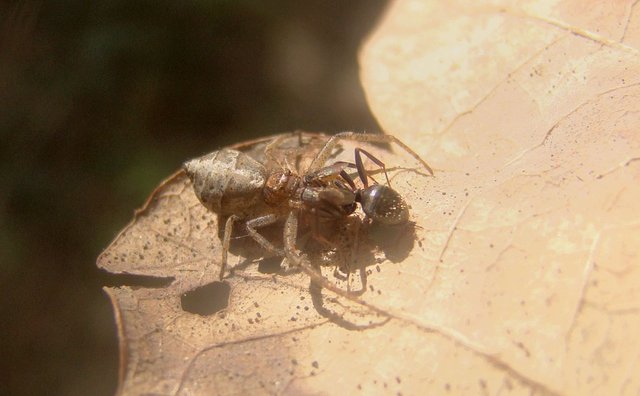
Here you can observe another small spider in action. It looks like some sort of crab spider, camouflaged on the forest floor, among the fallen leaves.
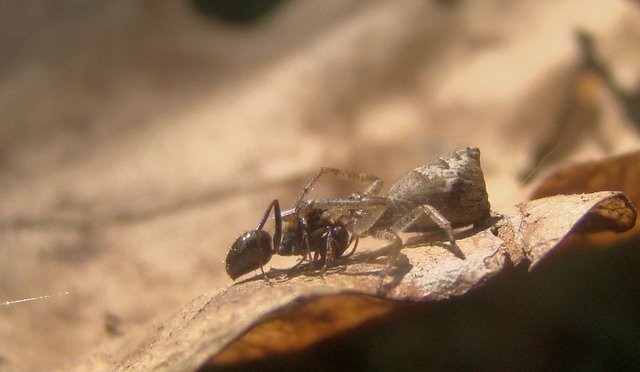
Definitely an ambush hunter ... and in this occasion has caught a small ant.
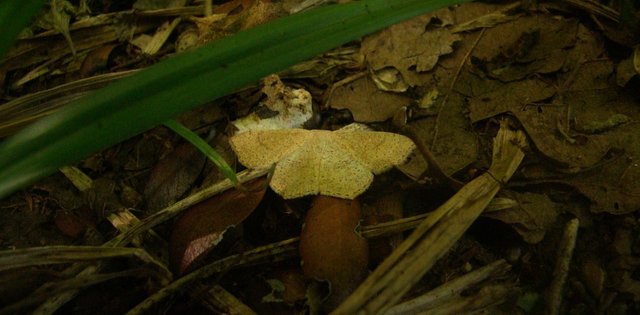
You can find many interesting species on the forest floor ... many moths ... I don't know which one is this ... I tried to find the name, I swear :)
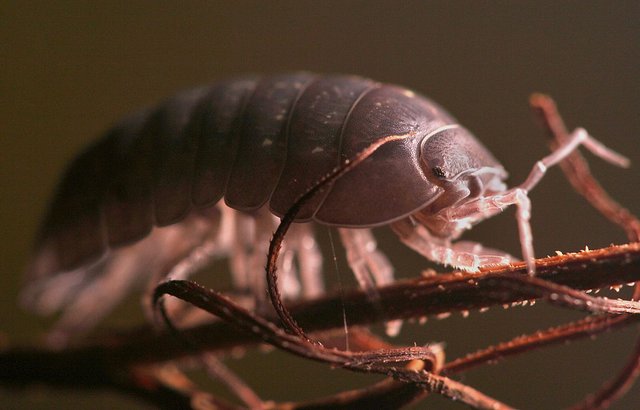
Many Armadillidium ... on this picture is the Armadillidium vulgare ... the Common pill - bug ... while on the following photograph ...
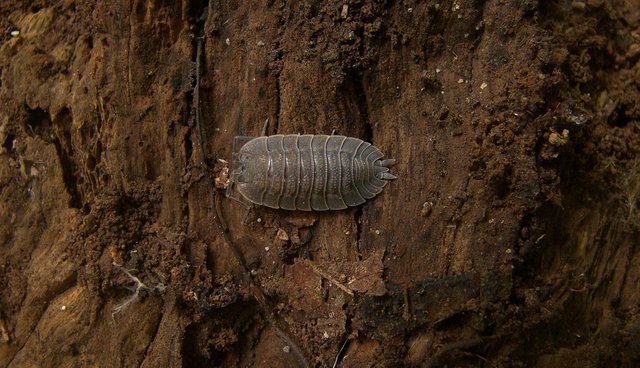
... you can see another species ... the Porcellio dilatatus.
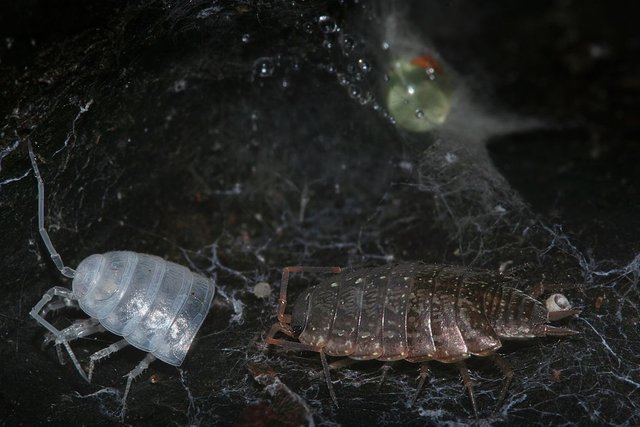
Here is a different Porcellionidae species ... and this exemplar recently exited its old exoskeleton. I made this photograph through a hole in the rotting tree stump.
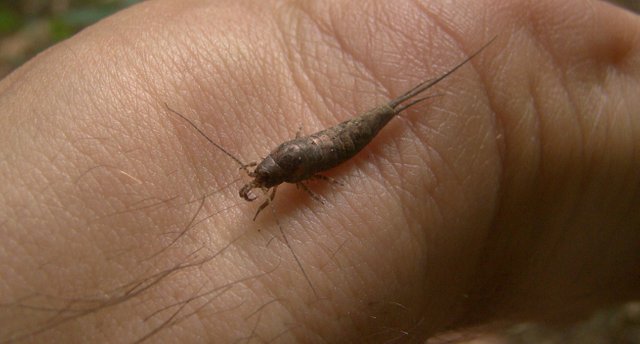 (Enlargeable)
(Enlargeable)This very peculiar little creature is a member of the Archaeognatha order. They are some of the most evolutionarily primitive insects, true living fossils.
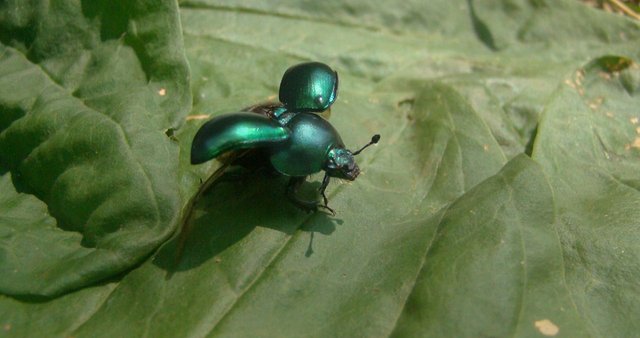
This shiny dump beetle is also a forest floor inhabitant. You can often find it on excrement and carcasses ... or just passing through the carpet made of fallen leaves. When the beetle has enough of photo shooting, she spreads her wings and flies away ... as you can see on this picture.
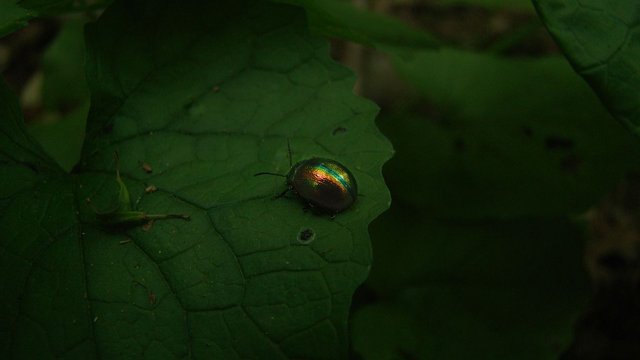
This is another shiny example from the deep shade under the trees ...
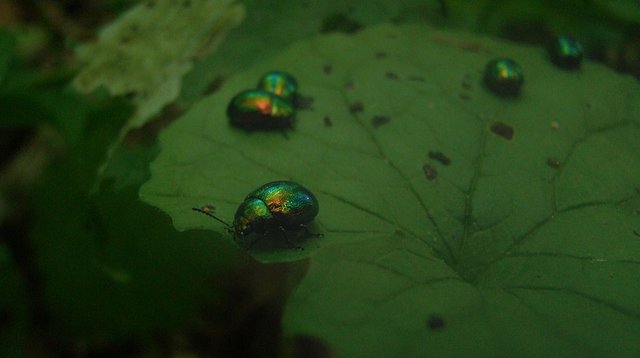
... these colorful members of some Gastrophysa species ( I mean, this is what I think after have seen many possibilities on the Internet, I'm not completely sure) are feeding ...
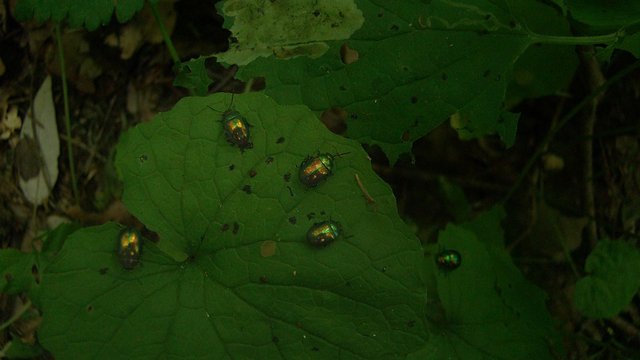
... on some large juicy leaves that grow in the permanent dusk of some very dark and dense corners of the woods.
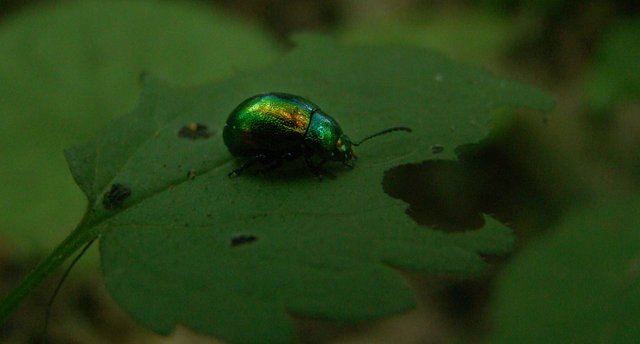
What a jewel ... this is a highly decorative insect.
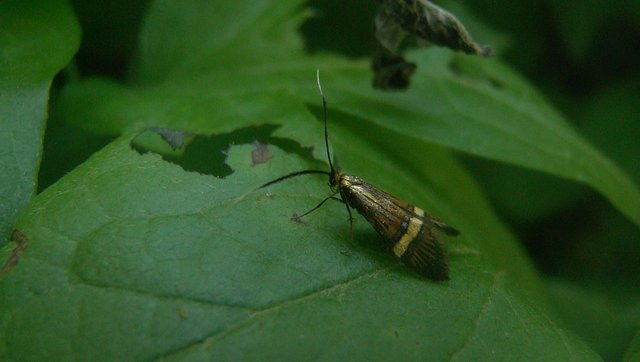
Back in the higher levels of this habitat, more or less in the comfortable level of my eyes ... we can observe some tiny colorful moths ...
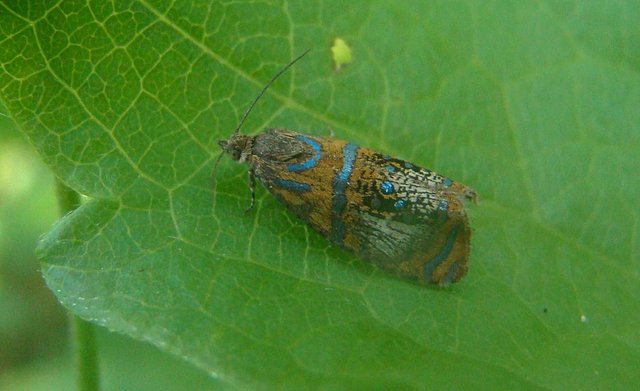
... of various, temporarily undefined species.
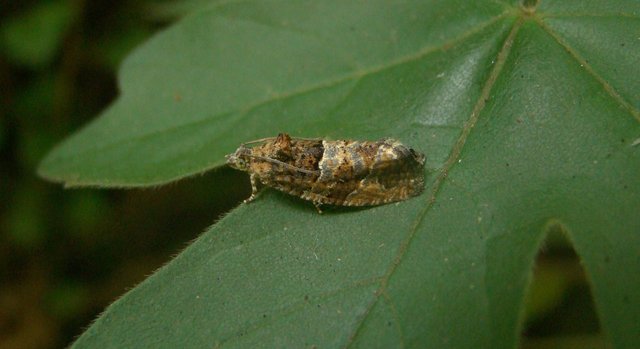
This one is less colorful ... more camouflage oriented.
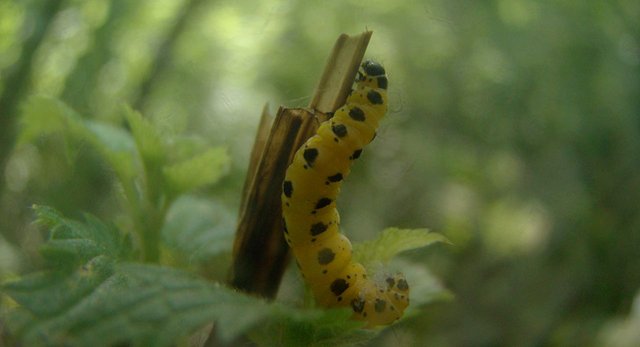
A variety of caterpillars ...
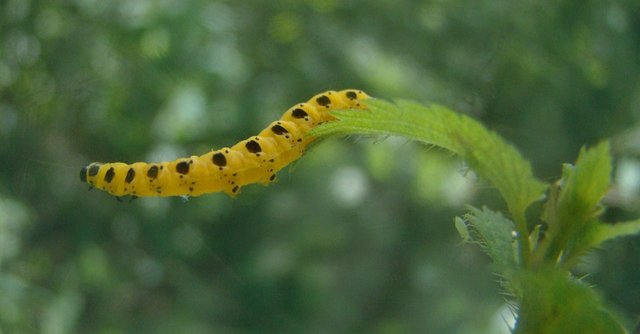
... is feeding here ...
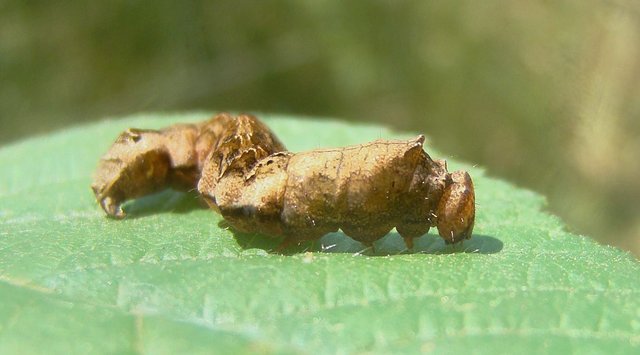
... on the lower branches of the trees ...
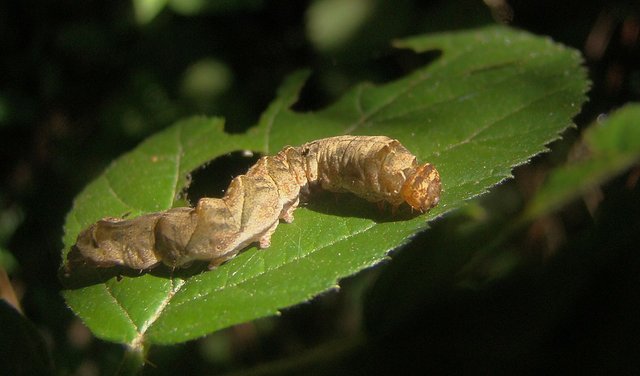
... many interesting shapes and colors ...
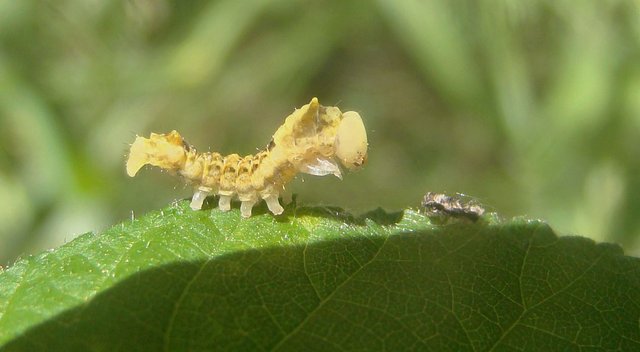
... and some great examples of mimicry.
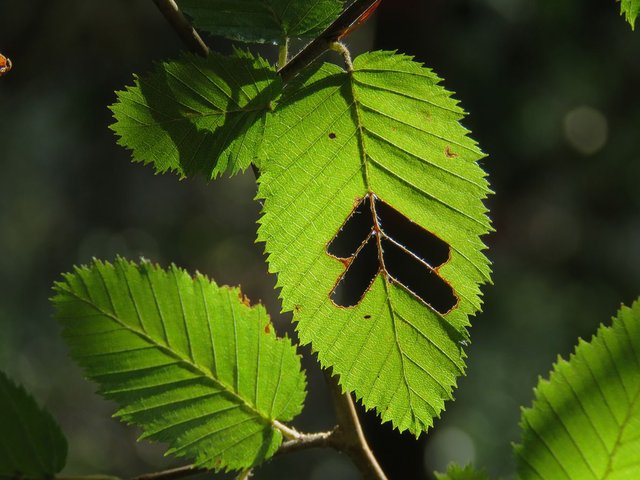
Here are some elm leaves munched in an interesting way ... it looks almost like some kind of sign :) a mysterious message written / eaten in the green.
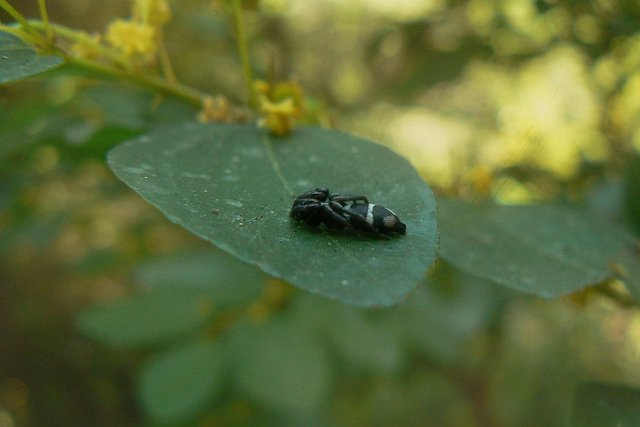
Here is something that looks like a small beetle ...
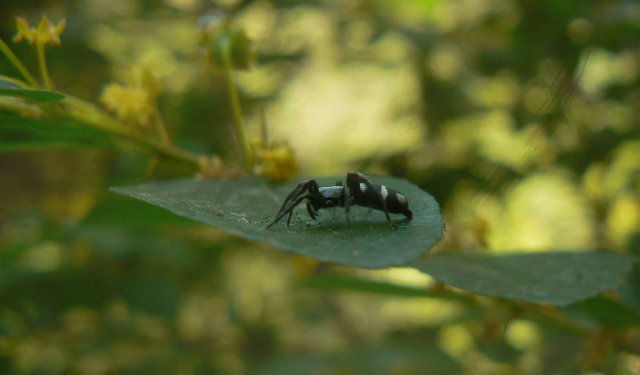 (Enlargeable)
(Enlargeable)... but when the thing spreads its legs and is ready to run, it's clear that is a small spider ...
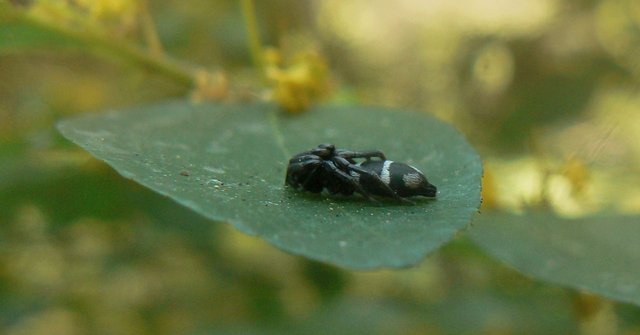
... a pretty cool mimicry.
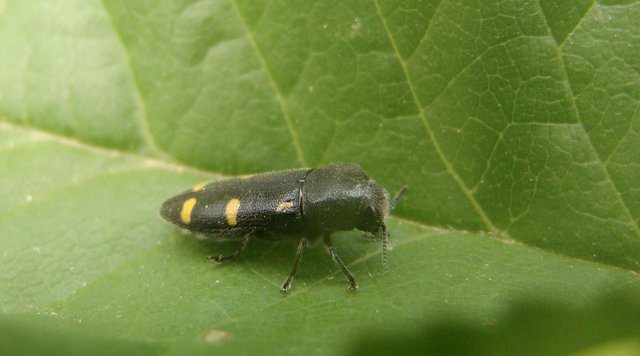
These jewel beetles (Buprestidae family) ...
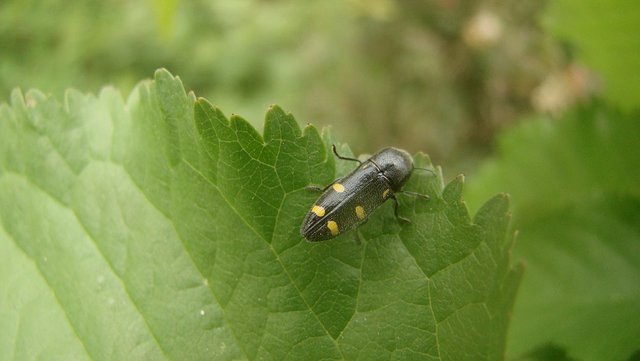
... are relatively similar in shape and size. This is a large and varied group of beetles ... on the following photograph ...
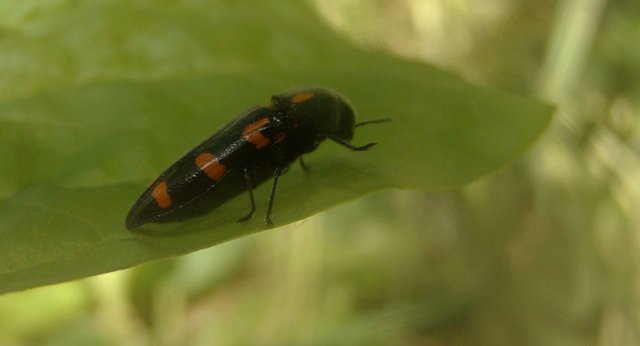
... is another, very similar species.
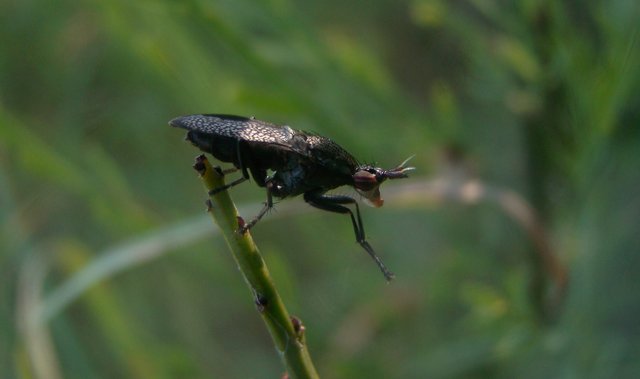 (Enlargeable)
(Enlargeable)Here is one of the most interesting fly species I ever saw in these woods, and unfortunately I didn't found anything about this species ... for now.
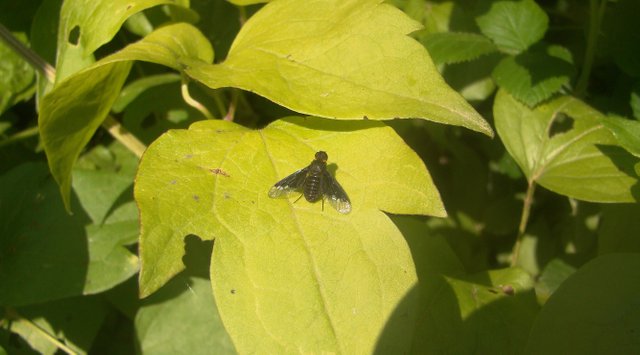 (Enlargeable)
(Enlargeable)Another pretty peculiar fly ... and again, I can't' t tell you much about her ... but at least on this enlargeable photograph you can see how this species looks in her natural habitat.
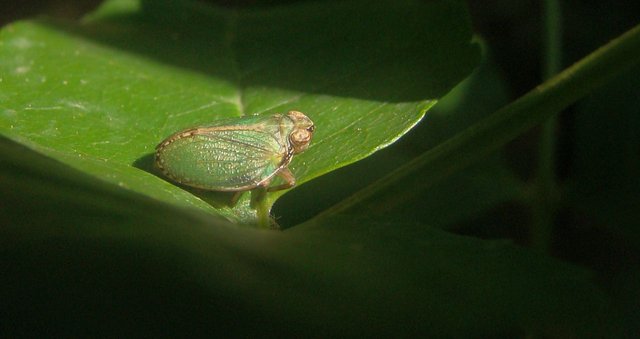
This is one of the many Froghopper species ... they come in an incredible variety of shapes and colors. Almost very year I'm surprised by some of these insects that I never saw before.
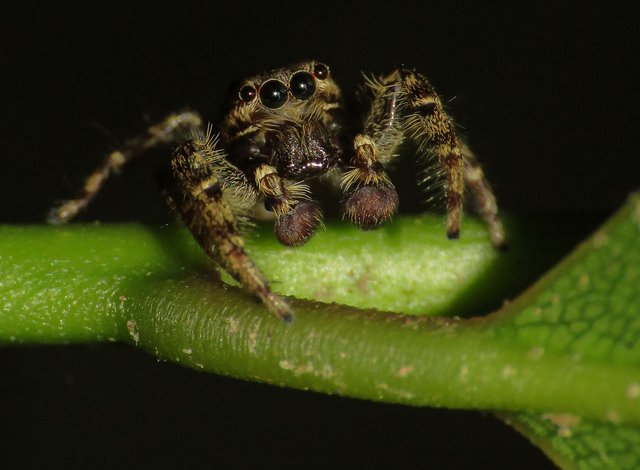
Here is another little ambush hunter ... a jumping spider.
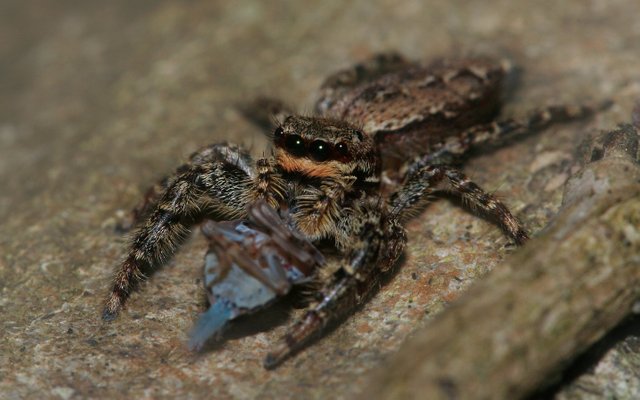 (Enlargeable)
(Enlargeable)On this photograph you can see a similar species ... well camouflaged on the bark of the tree ... with the prey ... one of the many Froghopper species.
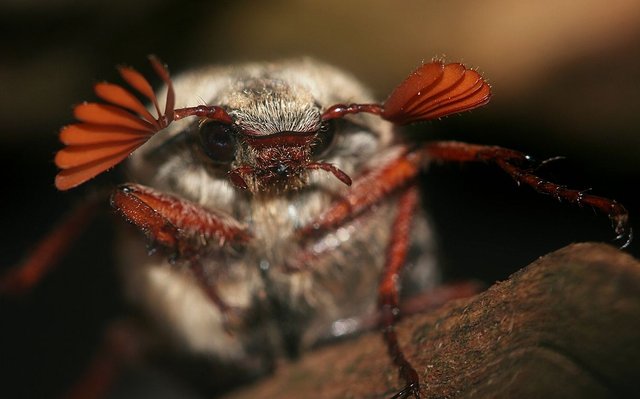
On this portrait you can see the lovely face and antennae of the Forest cockchafer (Melolontha hippocastani) ...
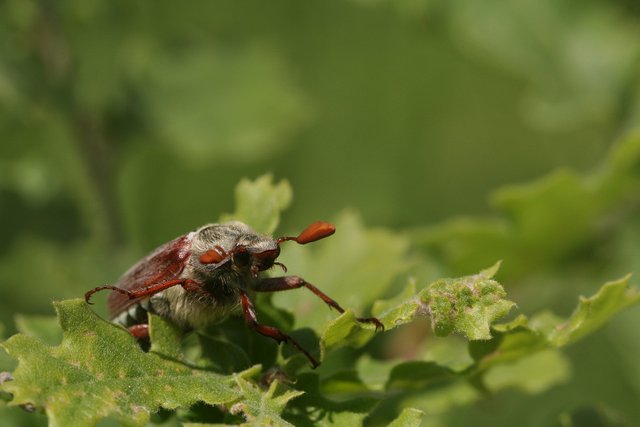 (Enlargeable)
(Enlargeable)... one of the most common and well known beetle in this place.
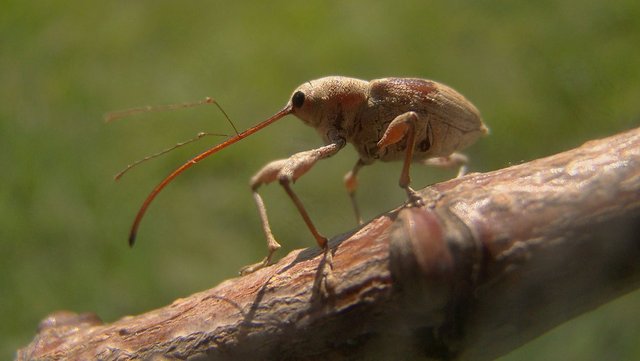
This extravagant - looking beetle is the Acorn Weevil (Curculio glandium ) ... and now ...
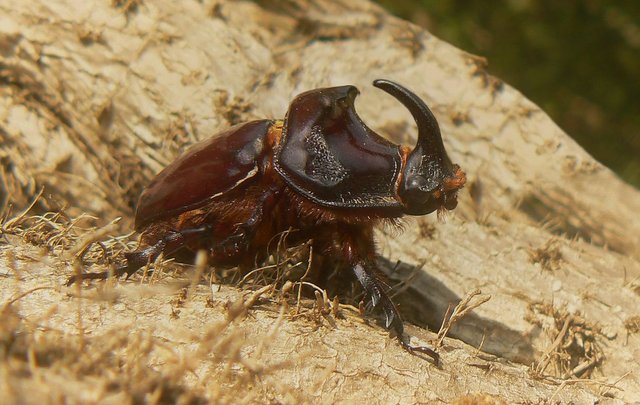
... to end this forest journey in style ...
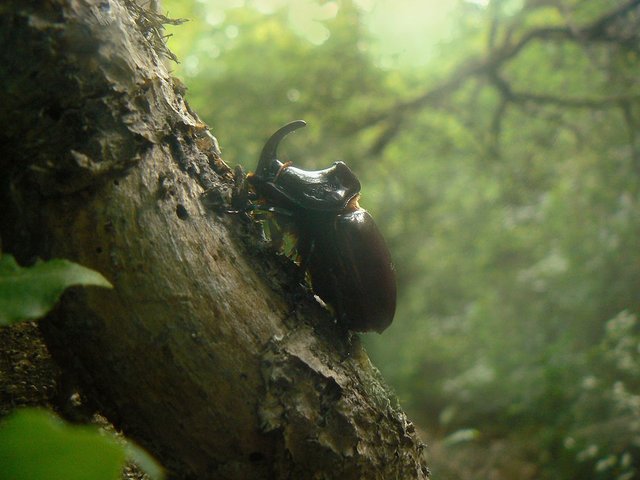
... another spectacular species ... the European rhinoceros beetle (Oryctes nasicornis) climbing along the rotting tree ... as always in these posts on Steemit, all the photographs are my work ... and before the definitive ending, I feel the need to tell you that this is only a tiny fragment of what these forests have to offer ... I have many more photographs from this place and there is even much more that I never had the opportunity to photograph, and there are also things I never saw, and not a small amount of them. :) And now that's really it, all that it is for today... have a good day ... or night ... wherever on this wonderful planet you are ... THE END.
[//]:# (!steemitworldmap 44.920574 lat 13.969945 long d3scr)
Very beautiful pictures.
Thanks :)
Summer in your woods is colorful and exciting because there is so much to be seen and the surprises are endless. I just love the face of the Forest cockchafer! And I can't imagine what it would be like to see those large male stag beetles flying around a dusk and that is one surprise I could do without.
You found that pill bug after it molted by looking through a hole in a tree stump?!?! I would be so afraid to do that because knowing my luck, something might jump at my face causing me to have a heart attack. If a spider came out and crawled on my face, that would kill me instantly. LOL!
I give you a lot of credit walking through the woods like you do and I bet you spend hours in there. Thanks to you, I will never have to take that scary walk. I can sit in the comfort of my home and be an armchair traveler. I am looking forward to more of your travels and remember that I will be excitedly waiting in my chair. Your amazing photography is the icing on the cake. Until next time @borjan. : )
:) Thank you. See you in the Week 53.
Congratulations, Your Post Has Been Added To The Steemit Worldmap!
Author link: http://steemitworldmap.com?author=borjan
Post link: http://steemitworldmap.com?post=a-few-words-about-th-1584657311
Want to have your post on the map too?
Amazing your natures photography, greetings!
Thank you :) Glad you like these photographs. Greetings.
Wonderful post and photos! I have always thought that insects are that size so as not to scare humans hehehe, imagine that they were the size of a cat or dog ...
:) This often crossed my mind too ... it will be a scary world ... although some fluffy moths with cute faces could be nice as pets, maybe :D
So many insects, I don't even know which to highlight) Great post!